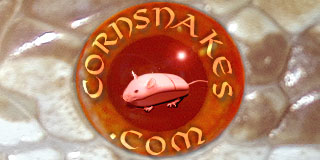The males definitely have a deserved reputation for going off of feed from time to time (including every spring)!. My point was only that one big fat mouse once a week doesn't seem to be the ideal way to feed.
I hope you didn't take my post in a derogatory fashion as it was not aimed at correcting or refuting your prior statement. It was aimed at being more specific about the vast differences between the males and females and trying to help the OP understand in the future why a female might be sucking down everything in sight while that skinny little male shows no interest in eating at all.
Actually though, I think it all depends once again on the snake in general. I've had no problems feeding 2 of my larger females full grown mice once a week for extended periods of time but I wouldn't recommend this as a strict regimen either. More typically I usually, try to feed my adult females 2 hoppers than 1 adult mouse. So, while I'm not discounting your statement, I guess the "ideal" is relative to the individual snake at hand.
They need to stay active was the advice I got and letting them sit for days digesting was a sure way to keep 'em still.
While I will hold no claim to being an expert at anything, I don't know how to equate that ideology. I mean, typically most, if not all species of snakes that eat a significant meal will become less active if possible so that they can use their bodily resources to ensure proper and complete digestion. I don't see why this would be really any different in the hognose species. Possibly that conjecture is based on their main diet of frogs and toads or other smaller more easily digestible prey items if those items do indeed take less energy/resources to digest whether based on size or composition. I would like to know more about why this was said in order to try and better understand possibly a more suitable means of husbandry although I would want definitive proof, not just the sole experience from one specific breeder.
I only have had 1.2 adults, so not a big pool to draw from, but I never get much more than a flatten and hiss when bothered. I'm surprised you have a biter, I sold babies saying defensive biting was a near impossibility! I thought I'd researched that one.

Well, this particular one is really the exception to all of our other hoggies except maybe our Anaconda as he seems extremely high strung like she is. She's never handled well and even when left alone, always is sitting at the front of her tank hissing and striking, even if you are walking 8 feet away. It's really funny and odd, especially considering that's she's able to see or pay attention to something so far away. But that's just her. Only lately has she begun this biting business and only really when you put your hand in her tank. Once I get her out, she sometimes calms down but hasn't tried to bite outside of the tank. I've had this snake for over a year, so I'd say I know her behaviors fairly well considering her past history. But that's what I love about hoggies, their unpredictability

I know what you mean about aggressive feeding! I've never owned snakes near as prone to eat a mouse sideways! They'll fold 'em in half and struggle with 'em for twenty minutes sometimes. I've tried to turn the mouse around with hemostats, but they just hang on and chew harder. Another reason feeding small makes sense to me. Do you think they'd do better on a corn feeding schedule?
Eh, again, I don't think trying to maintain any snake on a particular feeding regimen is proper unless that snake does fit within the status quo. I just go by a snake by snake individual basis and take it from there. But again, there's a lot of hognose breeders out there that do many different things and have many differing positive experiences. So, I'm just hesitant to state what is "best" considering. I think it's just a matter of what works best for your snakes individual needs. Does this mean that all of my snakes are on varying feeding schedules and diets? Not necessarily since most of them do adhere to the stereotypical patterns associated with western hogs, but I do have a few anomalies that have to be treated differently than the rest. So, I just take base my care around the individual using the fundamental ideological "care sheets" as more of a quidelines than a strict ruleset

